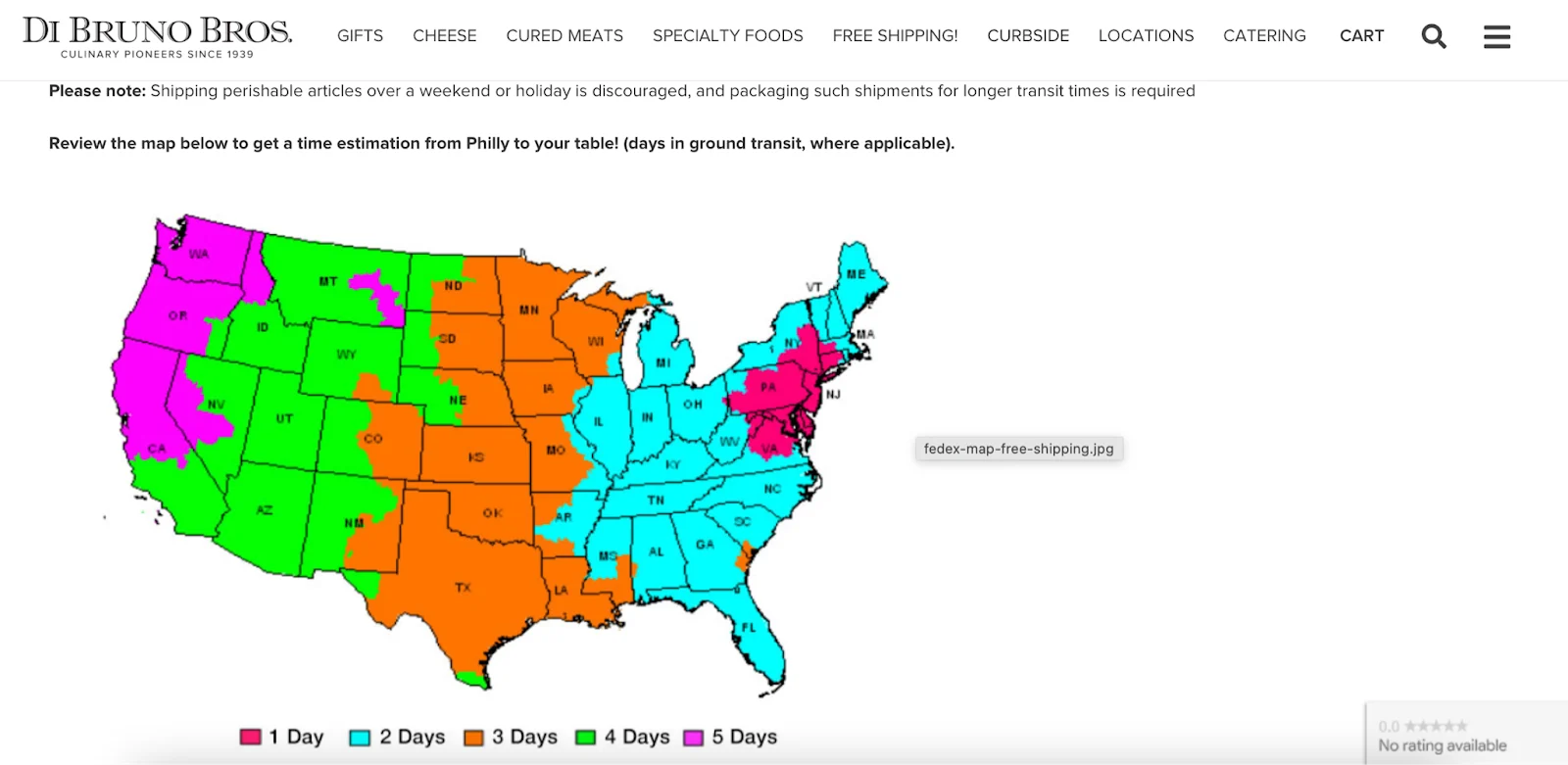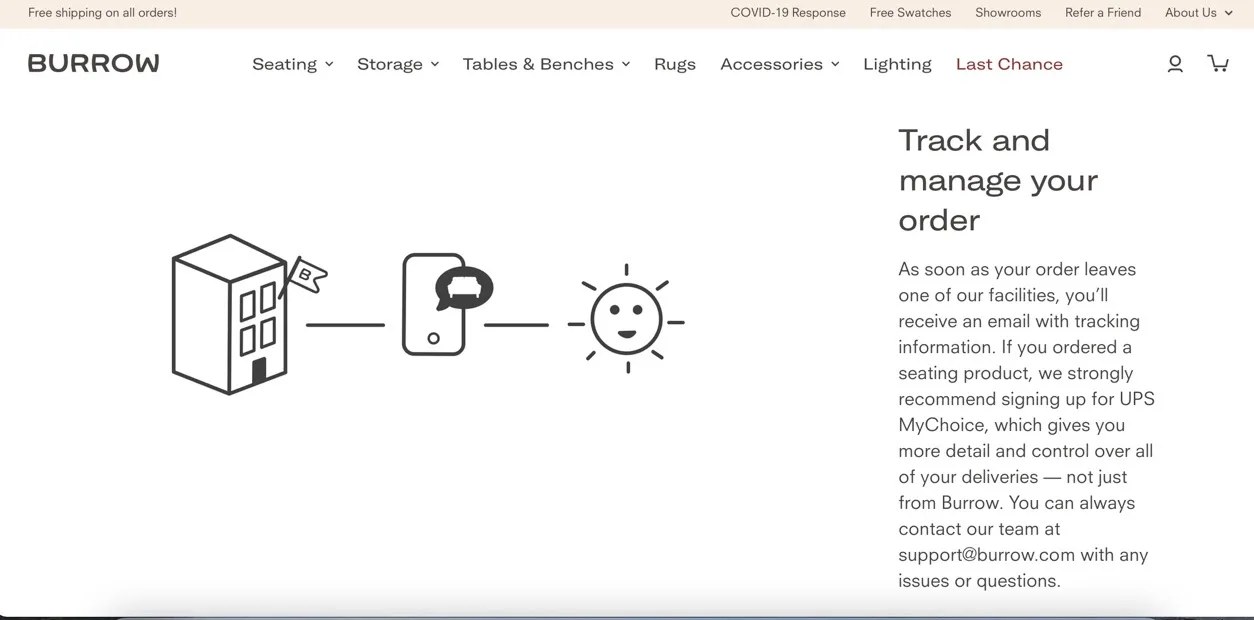How to Use Automated Shipping to Improve The Order Shipping Process in 2022

Imagine it’s 1860, you live in New York, and you need to send a package to your cousin in California. You trek to the post office, and your options are a 25-day stagecoach, a months-long ship voyage, or the fastest option, ten days via The Pony Express. Ten days!
The world has come a long way since 1860. We can order something online, and it can be on the doorstep in two days or less. Overnight shipping for most is an option, not just a luxury.
We got to this point with innovation and business solutions born of necessity. The Pony Express, though short-lived, was an answer to the long delivery times between the east and west coasts.
These days, automation is the answer to the modern world’s need for fast and affordable shipping.
Innovation has introduced automation software, robotic process automation (RPA), machine learning, and even drones. The successful implementation of RPA and AI can transform how accurate and efficient your shipping process can be. Robots have replaced the ponies, but they’re getting the job done.
Suppose you’re unsure how automated shipping can help you improve your order shipping process, or you’re hesitant to undertake such an endeavor. Many of the automation implementations are less endeavors, more investments—investments that will continue to pay dividends well into the future.
And in the future, who knows what will be delivering the mail. Maybe robotic ponies?
What is Order Shipping in Ecommerce?
What’s the last thing you bought online? Was it wireless headphones? Paper towels? From the moment you hit “Buy Now”, to when you received those paper towels, a complex set of processes, commonly referred to as ecommerce order shipping, was taking place.
Ecommerce order shipping is the process of getting a product from an online retailer directly to the customer.
While the basic premise of ecommerce order shipping is straightforward, many factors go into creating a seamless, efficient shipping process. Complete knowledge of your product and how it will be shipped is essential, as is the team you assemble, the workflows you establish, and the expectations you set for your customer.
For example, Di Bruno Bros. is a specialty food retailer that ships tons of perishables every year. They have an entire website page devoted to their cheese shipping process.
Knowing their product inside and out, and utilizing automation, allows them to offer their customers various shipping options, so they receive their cheese on time. The map below is an example of the relevant shipping information they provide their customers.

The Challenges of The Ecommerce Shipping Process
Like any complex process, the ecommerce shipping process has a lot of challenges. Ecommerce shipping can involve many business entities, all with their own communication styles and strategies. Factor in human error, and you have the recipe for a customer service disaster.
Here’s an example of one of those challenges. As of 2019, 69.57% of shopping carts are abandoned before checkout. One of the driving forces behind cart abandonment? Expensive shipping costs.
Carriers and international shipping rates can drive up costs. These costs are passed on to the customer, and your business suffers. How can you avoid high shipping costs? By accepting automation and implementing it into your ecommerce shipping process.
Other challenges include ineffective return policies and procedures, poor communication with suppliers, incorrectly processed orders, poor inventory management, not using the right technology, and, as we learned in the past year, world events that are out of your control.
After addressing these issues, we’ll look at adapting business procedures and using new technology to improve the shipping process. You’ll never completely eliminate shipping challenges, but you can minimize their effect on your business.
1. International shipping rates and procedures.
If you’ve ever sent anything overseas, you know that international shipping costs money. Unfortunately, sometimes this cost has to be passed on to your customer, which can, in turn, affect your business. 49% of consumers will abandon their cart if additional costs like customs and shipping are too high.
In turn, the procedures to ship internationally can be a burden on your business. There are 195 countries globally, each with its own import and export rules and customs fees. Navigating this logistical web might be outside the scope of your business, but it can be a strain even on large corporations.
Many companies choose to only ship within specific countries or within certain geographic regions to minimize international shipping costs.
2. Disorganized return process & policy.
Despite the best work apps, enacting and executing a sensible returns process and policy has become a headache for many ecommerce retailers.
If your returns process is too stringent, you may scare customers away from purchasing your products. If your policy is too lax, customers may take advantage, putting a strain on your resources.
Half of all consumers report that a returns policy influences where they choose to shop. Having a flexible, transparent returns process is key to building customer relationships, as long as it is organized and enforced.
Returns policies need to be streamlined and clearly stated to avoid negative customer interactions. A disorganized returns process will frustrate your customer, sending them elsewhere for their needs.
3. Miscommunication with suppliers or shipping services.
Remember the game Telephone? Whatever the message was from the first person always ended up being completely different from what the last person said. Shipping communications are kind of similar. A set of specific instructions passes between many people, and hopefully, by the end, the exact instructions have been executed.
Unfortunately, miscommunication in shipping services is all too common. Most orders from point of sale to delivery pass through approximately ten or more departments. That leaves a lot of room for lost deliveries, upset customers, and negative reviews.
4. Incorrectly processed orders & inventory management.
This may shock you, but research shows that roughly 60% of items for sale are affected by inventory record inaccuracies. That’s a lot of product and a huge potential for negative customer experiences.
If your customer places an order on your website because an item is listed as in-stock, make sure that item is actually in stock.
Due to the ever-fluctuating nature of inventories, it can be challenging to maintain an accurate count of your products. An inaccurate inventory will lead to missed order fulfillment, and will result in negative feedback. If your best-case scenario is that you haven’t run into any issues yet, it’s time to re-think the scenarios.
5. Unhelpful customer service.
Unhelpful customer service can make or break a company. 89% of customers will stick with a company if they’ve had a good customer service experience.
Good customer service should be at the core of your ecommerce platform, and many of these customer service moments will result from the shipping process. Eliminating unhelpful customer service will go a long way to smoothing over any other bumps in the shipping process.
6. COVID-19 shipping challenges & delays.
Consumer demand for products bought online has soared during the COVID-19 pandemic and subsequent lockdowns. The shipping challenges and delays caused by the pandemic, too, have been extraordinary.
The cost of importing goods from Asia into the UK has increased fourfold, for instance. At the beginning of the pandemic, demand plummeted, only to skyrocket later on.
7. Not using the right technology.
The biggest challenge of the ecommerce shipping process? Not using the right technology to get such a complex job done.
“Old-school freight forwarders who book things by fax or on the phone, that’s no part whatsoever of this Amazon integrated supply chain, where you press a button on the computer, and it goes all the way through.” ParcelHero’s David Jinks told Ship Technology.
If you’ve been doing things the old-school way, now is the time to move forward and restructure your ecommerce shipping process. Using old technology will set you back with every year that passes, imposing significant reductions to your business. Using the right technology will keep you ahead of your competitors and changing business trends.
What is Automated Shipping?
Maybe you have an idea of what automated shipping is, and in your head, it’s primarily Jetsons-era robots zipping boxes around a futuristic warehouse. Reality isn’t that far off.
Shipping automation is simply the implementation of software that streamlines the shipping process. These implementations can vary across industries and, at their core, should automate routine tasks while corralling the entire scope of the shipping process under one system.
How does all this happen with automated shipping? All of your data will be in one place, making inventory management a breeze. Automatic data processing will scan and gather all of your data for analysis. Shipping software will give you real-time information about where each order is in the shipping process. Automation ensures that the order process begins as soon as the customer completes checkout.
Automated tracking can automatically update your customers about where their order is in the shipping journey.
Furniture company Burrow has made effortless shipment tracking one of their USPs. They state on their shipping and delivery page that as soon as an order leaves the warehouse, the customer is notified.

That’s only a fraction of what automation can bring to the table. Once you start applying it to your business, you’ll find the opportunities to automate are endless.
What Are The Advantages of Automated Shipping?
The advantages of automated shipping are pretty cut and dry. Automated shipping is going to streamline your shipping process, saving you time and money. Not convinced? Maybe the following information can change your mind.
1. Improves your workers’ efficiency & accuracy.
Automated shipping can improve the efficiency and accuracy of your business, and improve the efficiency and accuracy of your workers.
Warehouses are big and getting bigger. Almost 50% of an employee’s time is spent walking and picking orders. Automation can speed up picking, giving your employees more time to do other jobs.
Additionally, automation can improve the accuracy with which orders are picked and shipped, freeing up time spent correcting mistakes that workers can invest in different tasks.
2. Overall a cheaper solution.
If you’ve ever tried to ship something halfway across the world, you know how expensive shipping can be. The same is true for businesses shipping their products. Automated shipping can help to reduce those costs.
For example, automated shipping will save you some labor costs and reduce weight surcharges through better dimensional packaging instructions. Looking to cut costs even more? Consider dropshipping, which allows you to forego a warehouse altogether and ship products directly from the wholesaler to the customer.
3. It can integrate seamlessly with your business.
The beauty of automated shipping is it can help you streamline every aspect of the shipping process, saving you valuable time and money. From the very beginning of the order process, when the order is placed, through picking and filling, to updating inventory, automated shipping really can take you from A to Z.
The consolidation of all your shipping and inventory data in one system will give you real-time access so you can make essential decisions and execute accurate forecasting.
4. Provides real-time analytics.
One of the joys of the internet is having so much information at the tip of the fingers. Automated shipping provides that same feeling with real-time analytics, putting all your shipping and inventory information in one place, ready whenever you need to see the bigger picture or the tiny details.
Need to know pricing for the best shipping options? Automated shipping will figure out the answer and compile the data for you to analyze.
5. Reduces human error.
We all make mistakes. Have you ever tried to type in a SKU number for a product with a faulty barcode? Miss one number, and you have to start all over. Now, imagine that situation happening in your warehouse when an employee can’t scan an item and types in the wrong number.
Automated shipping solutions almost completely eliminate the human error involved in logistics. And, luckily, it won’t replace your human workforce.
Instead, your digital workforce, the software robots working in tandem with your employees, can take on mundane tasks leaving your employees with more manual tasks and complex work.
6. Optimizes the supply chain & inventory management process.
Managing inventory and streamlining the supply chain of your business is essential and complex. This is especially true if you have multiple distribution centers.
Having all of your data in one automated shipping system or ERP will allow you to have accurate, real-time inventory data, which will reduce shipping delays and hiccups in your supply chain.
With ease, you can send an item from one warehouse if stock is low in another. And a bonus? Automated shipping can automatically reorder stock for replenishment.
7. Planning business growth becomes easier.
Having all of your shipping and inventory data in front of you allows you to plan ahead. Planning for growth is essential for any business. That’s been especially true in the last year.
Solo Stove CEO, John Merris, told Yahoo Finance Live that before the pandemic, they “were enjoying 100% year-over-year growth” but “when the pandemic hit, we saw an immediate acceleration of that growth. We’ve been up over 300% this year since the pandemic hit.’”
Automation can help you plan for unexpected and expected growth, allowing you to meet the demands of an expanding business.
8. Improves the overall customer experience.
Whatever automation options you choose, the benefits will be noticeable, improving the overall order experience for your customers. Operations will be streamlined, and you can offer customers the options that work with their budgets and time constraints.
Alternatively, automation tools like RPA can help you utilize web testing to improve the customer experience of your website. All-in-all, automation will prove useful in many aspects of the overall customer experience.
Best Practices For Utilizing Automated Shipping in 2021
Introducing automation to your shipping process can seem overwhelming, especially if you’re starting from scratch. With a few guidelines and some practical information, utilizing automated shipping could be the best thing you ever do.
Start small, but be thorough. As you implement automation, you’ll be amazed at the difference it makes in day-to-day processes.
1. Utilize the right ecommerce automation tools: Artificial Intelligence, Robotic Process Automation & Machine Learning.
Don’t panic and think that you have to go from zero to Ocado-level bots all in one go. There are lots of ways and options to work automation tools into your business.
Artificial Intelligence (AI) can assist you in every step of the order process. AI can manage inventory, assign drivers, locate products in the warehouse, and place new orders.
Machine learning and AI go hand-in-hand. Machine learning is what it sounds like; as AI works within your systems, it uses data analysis to pick up on trends and make workflow decisions.
Robotic Process Automation is basically software that allows you to give instructions to a robot to enact. Approximately 90% of larger businesses will have implemented RPA in some way by 2022.
When you combine RPA and machine learning, you come up with AI IPA, or AI Intelligent Process Automation, allowing the system to learn and grow as it functions. As the technology improves and the market grows, RPA will prove to be an invaluable asset for your business.
The triple threat of AI, RPA, and machine learning will reduce error and strengthen your shipping process.
2. Use cloud computing to automate all sectors of your business.
You probably already have an idea of what cloud computing can do in your day-to-day life, but maybe you’ve never thought about how it can help you automate your business.
Cloud computing gives you access to different services, like databases, software, and data storage, across all of your business. It’s easy to connect every aspect, cost-effective, and fast to set up. It also allows your entire company to be on the same page, reducing communication mishaps and providing seamless usability.
3. Take advantage of the latest robotics to improve warehouse operations.
Remember the Ocado robots mentioned earlier? Supermarkets and other industries are taking advantage of the latest robotics to improve their warehouse operations.
In 2020, The Kroger Co., a US-based grocery chain, doubled their 2019 ecommerce shopping numbers. They recently opened their first automated online grocery warehouse, with plans for 20 more warehouses across the US.
And in the future? The innovations will keep coming, with new and improved technology changing the face of the modern warehouse and fulfillment center.
Boston Dynamics, a US robotics company, recently debuted their new box-moving robot, “Stretch.” This robot can analyze and lift boxes and maneuver through cramped warehousing spaces without the need for reconfiguration. While “Stretch” may be a long way off from ubiquity, robotics innovations are being made every day and will further improve warehouse operations.
4. Automate specific processes: Reordering to warehouse picking and packing.
The best way to save time and money and improve order accuracy? Automating routines in your business that are time-consuming and repetitive.
If automation is already playing a role in your inventory management, then the next logical step is to have it reorder products when supplies are low. For sorting and unloading shipments, large-scale robots can easily handle pallets. Alternatively, robots and AI can scan the dimensional weight of shipments to assist in cartonization and ensure trucks are not overloaded.
AI can create pick lists and shipping labels, and even direct employees to the correct warehouse location to find a specific product, expediting the fulfillment process. As you work with automation, you’ll realize the specific tasks you can configure are endless.
5. Use software to navigate detailed documents like customs and tax declarations.
Shipping documents, such as bills of lading, invoices, and packing slips, leave a lot of room for human error. Automation software, integrated successfully into your document workflow process, can automatically pull correct information from order information and apply them to documents.
It can also assist employees in filling out shipping documents with smart forms, thus streamlining document processing.
AI software is helping vaccine distributors negotiate with vendors and complete contracts in less time, for example. It’s also helping Pfizer and Moderna reduce their supply chain risks with contract management tools.
Maybe you overlooked documents as an area where you can automate, but it’s worth it to explore if it’s important to your shipping process.
6. Utilize shipment tracking to enhance the customer experience.
Have you ever anxiously checked the tracking of a gift to make sure it would be arriving on time?
Shipping can often seem like nuts and bolts, but when it comes down to it, there is a fundamental human element. Someone has ordered your product, and whether it’s an individual or a business, they’re anticipating that delivery.
Shipment tracking allows your customer to engage with your business. Keeping your customer updated about their order’s progress will build you goodwill. A positive experience will result in a happy customer who will likely order again. A poor experience may cost you that customer.
7. Take advantage of automated customer service.
You’ve probably been on a website recently when a little box in the bottom right-hand corner of the screen pops up, asking if you need help with anything. Say hello to the chatbot; one of the many ways automated customer service is helping businesses connect with their customers.
Automated customer service, like chatbots, can provide assistance when your employees are off the clock or help a customer self-navigate their issue. Automation can direct customers to a product they’re looking for or suggest a product that might suit them better.
Mattress company Hyphen takes pride in its streamlined approach to buying a mattress. If a customer has a question, a contact form on the homepage allows them to send a message when employees are off the clock.
This kind of customer service engages the customer and uses intelligent automation to streamline the workflow.

Ecommerce Shipping Trends of 2021: Where is The Market Going?
With the COVID-19 pandemic having lasting effects into 2021 and the foreseeable future, understanding where shipping trends are headed will be of the utmost importance.
One thing to count on is the continued growth of ecommerce sales and the need for affordable, fast shipping options. Hyperautomation technology, or the combined use of RPA, AI, and machine learning that takes automation to another level, will play an ever-increasing role in optimizing shipping. Hyperautomation looks into the tasks that are already automated and creates new automation, further streamlining the supply chain.
Keep an eye on the sky in 2021. In 2020, the Federal Aviation Administration (FAA) approved the use of drones for low-altitude deliveries. 88% of surveyed companies saw a positive benefit in one year or less from using drones in their business across multiple industries.
Big companies like Amazon and Walmart are already planning drone delivery strategies, so keep an eye on how this develops. Other trends to keep an eye on include eco-friendly packaging and an increase in ship-to-store pick-up options.
Conclusion
So, now you know the challenges of ecommerce shipping, you know what automated shipping is and how it can optimize your business, and you know how to work it into your shipping process. What now?
Keep an eye on your shipping process, and keep looking for ways to improve your automation and manual processes. Investigate new shipping methods and follow up on trends—future-proof your business with an optimized, automated strategy to leave your competitors in the proverbial dust.

Tammy Wood the Director of Technical SEO at Automation Anywhere, has 20+ years in the SEO industry, with this experience she often takes a leadership role by mentoring and training newer search engine optimization experts.


